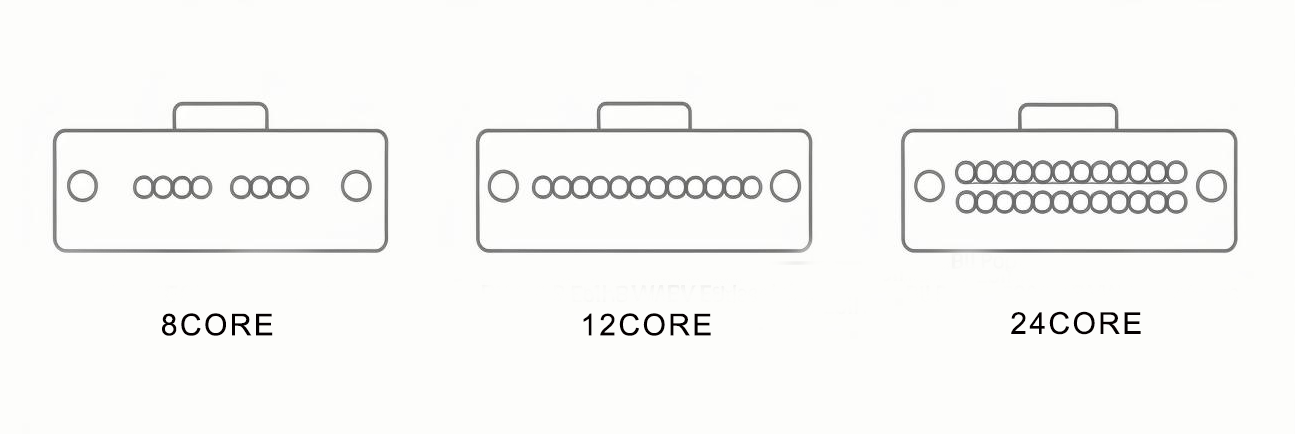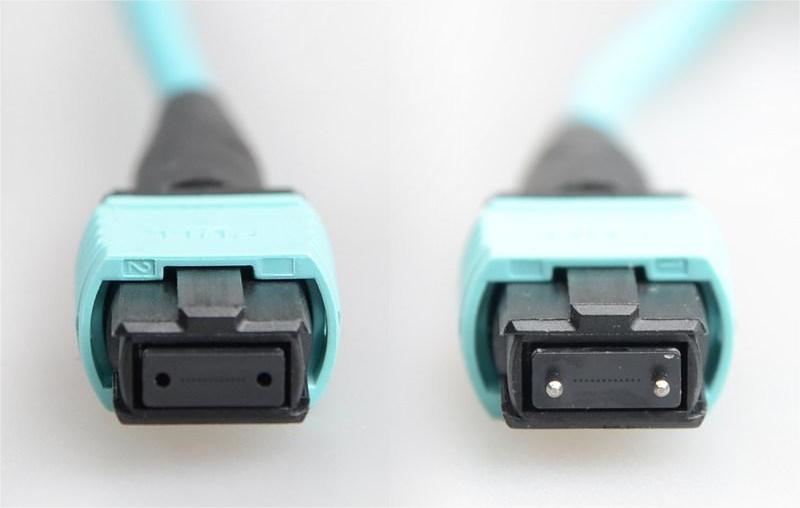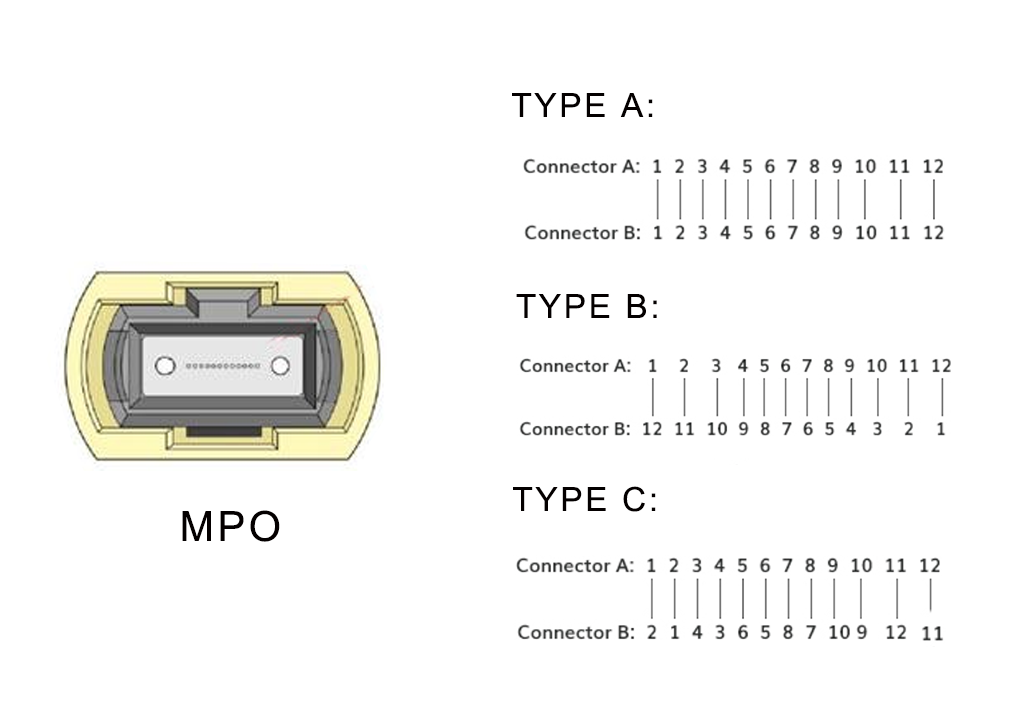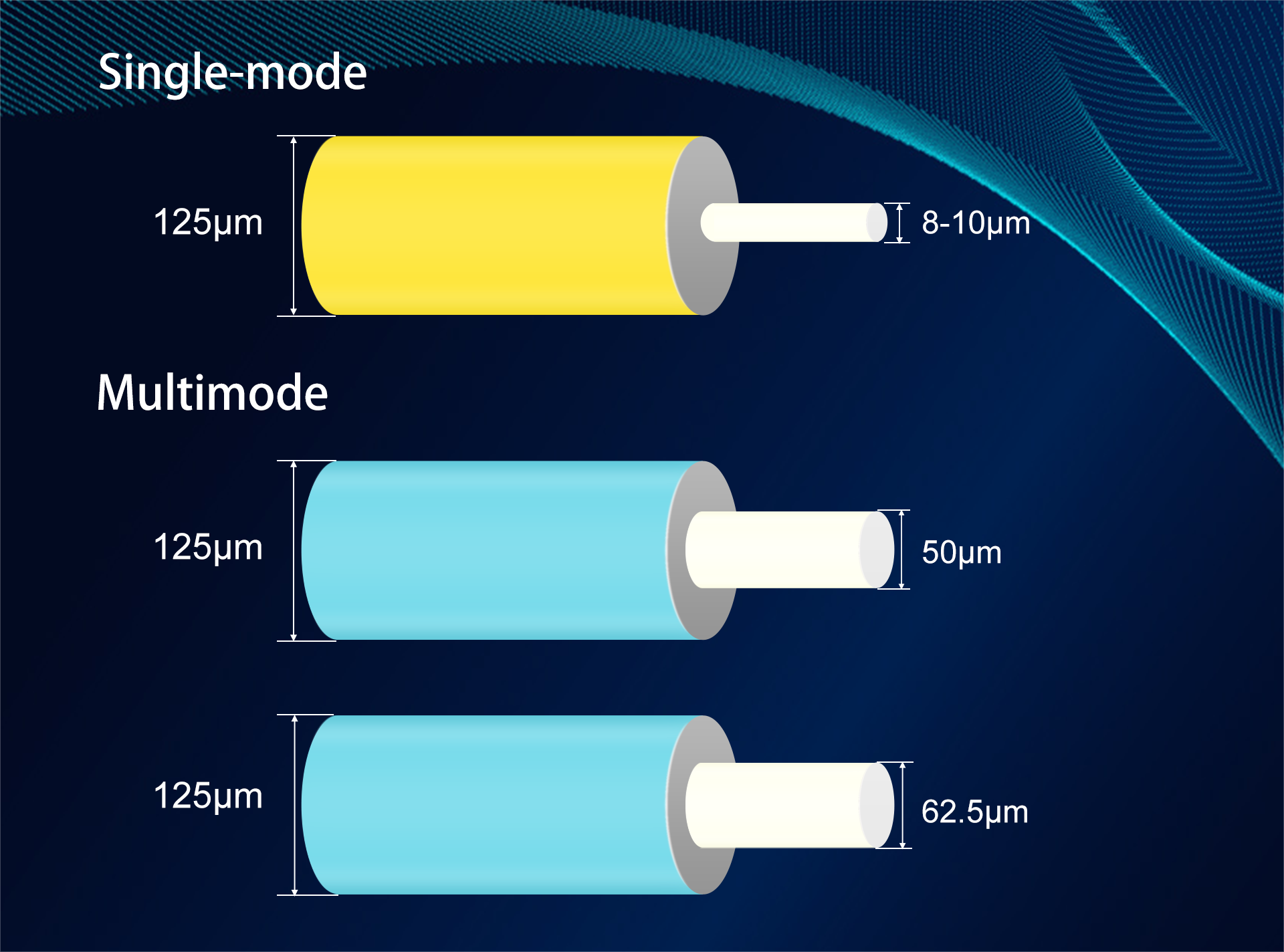

 Knowledge Base +
Knowledge Base +  2024.02.01
2024.02.01The world of optical communication is highly intricate, with connectivity being crucial. In this article, we will introduce MPO and MTP fibers, revealing their complexities, elucidating the differences between them, and providing insights on how to effectively use them in various applications for reference.
I. Overview of MPO Fibers
MPO stands for Multi-fiber Push On. MPO fibers generally refer to the MPO fiber patch cables commonly used. These fiber patch cables consist of MPO connectors and optical cables. The connector of MPO fiber patch cables is a type of multi-fiber optic connector adopted by IEEE standards as one of the connector types for 40G/100G transmissions. Like LC/SC/FC fiber patch cables, the difference lies in the connector heads and the number of fiber cores. MPO connectors are more complex than LC/SC/FC connectors. The MPO high-density fiber pre-connection system is currently mainly used in three major areas: high-density environments in data centers, fiber-to-the-building applications, and connections within optical transceiver devices such as splitters and optical modules.
II. Overview of MTP Fibers
MTP stands for Multi-fiber Terminal Plug. MTP fibers are an upgraded version of MPO fibers, featuring innovative designs for high-performance MPO connectors. Compared to conventional MPO connectors, MTP fiber connectors have been enhanced in terms of performance and adaptability. MTP complies with all professional standards for MPO connectors, which means upgrading existing MPO connectors to MTP connectors for better performance is entirely feasible. This connector type is registered by US Conec in the United States and protected by patents. Currently, MPO fibers are more common in the market, while MTP fibers are less prevalent.
III. Number of Fiber Cores in MTP and MPO Fiber Cables
Unlike conventional LC/SC/FC fibers, MPO/MTP fibers have a significant difference in the number of fiber cores. MPO/MTP connector components can accommodate 6 to 144 fibers, with 12-core and 24-core configurations being more common in the market. According to specifications, 12-core MPO/MTP fibers are arranged in a single row, while 24-core or higher configurations adopt multiple-row arrangements. They are generally used for connecting transmissions in 40G or 100G optical modules.

The connector heads of MPO/MTP fibers come in two types: male and female. Male connector heads have two pins, while female connector heads do not. The connection between MPO/MTP fiber connectors and optical modules relies on precise positioning through the pins. Two connectors being connected must have one male and one female connector.

>>>Read More:What is the difference between a male and a female MPO fiber optic patch cable?
IV. Types of MPO/MTP Fibers Based on Fiber Core Arrangement
Based on the arrangement of fiber cores, MPO/MTP fibers can be divided into three types: Type A straight-through, Type B staggered, and Type C pair-wise staggered.

MPO/MTP fibers can support both single-mode and multimode fibers, but the specific mode depends on the application and the distance the signal needs to transmit.
Single-mode MPO/MTP fibers are designed for long-distance transmissions, using single-strand glass fibers to transmit a single beam of light. The data transmission distance of single-mode MPO/MTP fibers can reach up to 100 kilometers.
Multimode MPO/MTP fibers are designed for short-distance data transmission. They use multiple paths (modes) to transmit light, allowing them to carry higher data rates than single-mode fibers. However, this also means that the signal weakens as the distance increases. Multimode MTP/MPO fibers are typically used for short-distance data transmission, such as within a single building or data center.

IV. FAQ about MTP/MPO Fibers
Are MTP and MPO compatible?
Yes, MTP (Multi-fiber Terminal Plug) and MPO (Multi-fiber Push-On) connectors are typically compatible with each other.
Can MTP and MPO fiber cables be used for both single-mode and multimode applications?
Yes, MTP (Multi-fiber Terminal Plug) and MPO (Multi-fiber Push-On) fiber cables are versatile and can be used for both single-mode and multimode applications.
Should high-density wiring systems use MTP or MPO fibers?
For high-density wiring systems, MTP (Multi-fiber Terminal Plug) fibers are typically preferred over MPO (Multi-fiber Push-On) fibers. The main reason is that MTP is a specific type of MPO connector designed for higher performance and density.
What type of fiber is used with MPO/MTP array connectors?
MPO (Multi-fiber Push-On) or MTP (Multi-fiber Terminal Plug) array connectors are typically used with MPO or MTP cables. These connectors are designed for multi-fiber cables, aiming to connect multiple fibers simultaneously within a single compact connector.
Additional Learning Hub Resources
MPO/MTP Fiber Optic Patch Cords Overview
100G CFP2 Optical Module Types and Solutions
40G QSFP+ LR4 Optical Module CWDM4 vs PSM4 Two Types Difference
Subscribe to the newsletter
for all the latest updates.
2-5# Building, Tongfuyu Industrial Zone, Aiqun Road, Shiyan Street, Baoan District, Shenzhen. China
